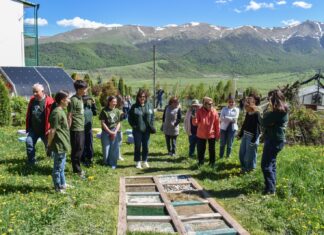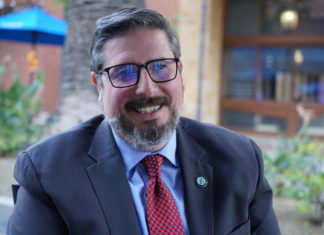By Florence Avakian
NEW YORK — “A child is a learning machine. All one has to do is create a learning environment, as well as promote the child’s identity and individuality. An environment has to be created so that the child can feel comfortable wanting to learn,” said Hovannes Khosdeghian, principal and teacher of the St. Vartan Cathedral School, and the Brooklyn Armenian School in New York.
His thoughts on this vital subject brought me back to my childhood when my mother, Ashkhen Kapikian Avakian for 50 years — even before my sister and I were born — was the dedicated volunteer principal and teacher in a few Armenian schools in New York. Every Friday evening she used to prepare the Saturday meals for my sister and me, since she would be gone all day Saturday in one of her schools. She would always buy food and drinks for her school children. And for the bi-annual hantesses, my sister and I were recruited to help sew the costumes, play the piano and accompany the singing of the children. It was a ritual that we got used to throughout our young and teenage years, and it left an indelible mark on us.
“The focus must always be the child,” Khosdeghian emphasized. “This child is a learning machine. All you have to do is create the environment, and promote the child’s identity and individuality. It is important not to create competition,” he added.
“Each child must be greeted when coming to school. As she or he enters, the teacher should look into the child’s eyes, and greet each one warmly. A warm atmosphere of caring and interest must be created,” he stressed.
Describing his unique teaching method, Khosdeghian explained that “a child learns a language either on the street or at home, and comes to school to do it correctly. In our Armenian schools, the teachers only speak Armenian. We concentrate on a child’s ability to recognize Armenian letters, in all five senses. This does not necessarily mean forming words.” Extremely important is for the child, he continued, is “to listen to the new sound system. In our schools, the children speak Armenian with each other from a very young age.”








